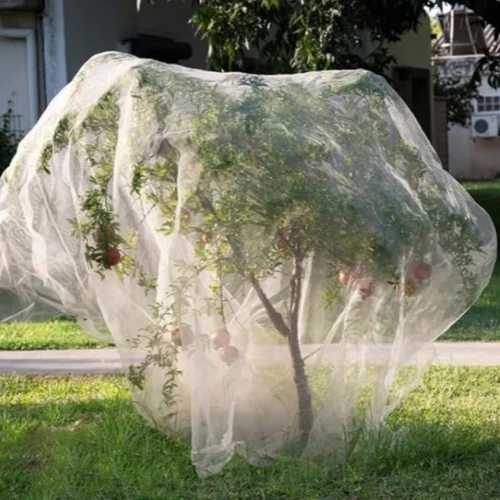-
 Afrikaans
Afrikaans -
 Albanian
Albanian -
 Amharic
Amharic -
 Arabic
Arabic -
 Armenian
Armenian -
 Azerbaijani
Azerbaijani -
 Basque
Basque -
 Belarusian
Belarusian -
 Bengali
Bengali -
 Bosnian
Bosnian -
 Bulgarian
Bulgarian -
 Catalan
Catalan -
 Cebuano
Cebuano -
 China
China -
 Corsican
Corsican -
 Croatian
Croatian -
 Czech
Czech -
 Danish
Danish -
 Dutch
Dutch -
 English
English -
 Esperanto
Esperanto -
 Estonian
Estonian -
 Finnish
Finnish -
 French
French -
 Frisian
Frisian -
 Galician
Galician -
 Georgian
Georgian -
 German
German -
 Greek
Greek -
 Gujarati
Gujarati -
 Haitian Creole
Haitian Creole -
 hausa
hausa -
 hawaiian
hawaiian -
 Hebrew
Hebrew -
 Hindi
Hindi -
 Miao
Miao -
 Hungarian
Hungarian -
 Icelandic
Icelandic -
 igbo
igbo -
 Indonesian
Indonesian -
 irish
irish -
 Italian
Italian -
 Japanese
Japanese -
 Javanese
Javanese -
 Kannada
Kannada -
 kazakh
kazakh -
 Khmer
Khmer -
 Rwandese
Rwandese -
 Korean
Korean -
 Kurdish
Kurdish -
 Kyrgyz
Kyrgyz -
 Lao
Lao -
 Latin
Latin -
 Latvian
Latvian -
 Lithuanian
Lithuanian -
 Luxembourgish
Luxembourgish -
 Macedonian
Macedonian -
 Malgashi
Malgashi -
 Malay
Malay -
 Malayalam
Malayalam -
 Maltese
Maltese -
 Maori
Maori -
 Marathi
Marathi -
 Mongolian
Mongolian -
 Myanmar
Myanmar -
 Nepali
Nepali -
 Norwegian
Norwegian -
 Norwegian
Norwegian -
 Occitan
Occitan -
 Pashto
Pashto -
 Persian
Persian -
 Polish
Polish -
 Portuguese
Portuguese -
 Punjabi
Punjabi -
 Romanian
Romanian -
 Russian
Russian -
 Samoan
Samoan -
 Scottish Gaelic
Scottish Gaelic -
 Serbian
Serbian -
 Sesotho
Sesotho -
 Shona
Shona -
 Sindhi
Sindhi -
 Sinhala
Sinhala -
 Slovak
Slovak -
 Slovenian
Slovenian -
 Somali
Somali -
 Spanish
Spanish -
 Sundanese
Sundanese -
 Swahili
Swahili -
 Swedish
Swedish -
 Tagalog
Tagalog -
 Tajik
Tajik -
 Tamil
Tamil -
 Tatar
Tatar -
 Telugu
Telugu -
 Thai
Thai -
 Turkish
Turkish -
 Turkmen
Turkmen -
 Ukrainian
Ukrainian -
 Urdu
Urdu -
 Uighur
Uighur -
 Uzbek
Uzbek -
 Vietnamese
Vietnamese -
 Welsh
Welsh -
 Bantu
Bantu -
 Yiddish
Yiddish -
 Yoruba
Yoruba -
 Zulu
Zulu
Jan . 15, 2025 05:19
Back to list
Bird Proof Netting Stretchy Bird Netting for Garden
Bird netting is a vital tool for both urban and agricultural environments, offering a humane and effective solution to prevent bird-related damages. Through years of experience, professionals have found that the selection of ideal bird netting hinges on several critical factors which ensure effectiveness and longevity.
Installation techniques can greatly influence the effectiveness of bird netting. Experts advocate for tensioned systems that prevent sagging and ensure full area coverage. Proper anchoring is vital, as poorly installed nets can lead to gaps that savvy birds may exploit. It’s recommended to consult an installation specialist or follow manufacturer guidelines meticulously to preserve the net's integrity and functionality. Trustworthiness in bird netting extends to the purchase from reputable suppliers. Those with a longstanding presence in the market often offer warranties and post-purchase support, a testament to their confidence in the product's quality. Engaging with suppliers that provide comprehensive customer service, including guidance on installation and maintenance, can significantly enhance the netting’s performance and longevity. From a sustainability perspective, opting for eco-friendly bird netting solutions is gaining traction. Manufacturers are now producing nets from recycled materials, which aligns with the growing demand for environmentally conscious choices. These eco-friendly nets do not compromise on quality or durability, making them a wise option for those committed to reducing their ecological footprint. In conclusion, selecting the ideal bird netting involves a comprehensive understanding of material qualities, mesh size, color, and installation methodology. Expertise in these areas not only secures the effectiveness of the netting but also builds a foundation of trustworthiness and authority in bird control solutions. As technological advancements continue, bird netting options are becoming more sophisticated, ensuring users have access to the best possible solutions tailored to their specific needs. Whether the goal is to protect an urban space or an agricultural plot, ideal bird netting is an investment in both utility and lasting protection.


Installation techniques can greatly influence the effectiveness of bird netting. Experts advocate for tensioned systems that prevent sagging and ensure full area coverage. Proper anchoring is vital, as poorly installed nets can lead to gaps that savvy birds may exploit. It’s recommended to consult an installation specialist or follow manufacturer guidelines meticulously to preserve the net's integrity and functionality. Trustworthiness in bird netting extends to the purchase from reputable suppliers. Those with a longstanding presence in the market often offer warranties and post-purchase support, a testament to their confidence in the product's quality. Engaging with suppliers that provide comprehensive customer service, including guidance on installation and maintenance, can significantly enhance the netting’s performance and longevity. From a sustainability perspective, opting for eco-friendly bird netting solutions is gaining traction. Manufacturers are now producing nets from recycled materials, which aligns with the growing demand for environmentally conscious choices. These eco-friendly nets do not compromise on quality or durability, making them a wise option for those committed to reducing their ecological footprint. In conclusion, selecting the ideal bird netting involves a comprehensive understanding of material qualities, mesh size, color, and installation methodology. Expertise in these areas not only secures the effectiveness of the netting but also builds a foundation of trustworthiness and authority in bird control solutions. As technological advancements continue, bird netting options are becoming more sophisticated, ensuring users have access to the best possible solutions tailored to their specific needs. Whether the goal is to protect an urban space or an agricultural plot, ideal bird netting is an investment in both utility and lasting protection.
Latest news
-
Shipping Plastic Bags for Every NeedNewsJul.24,2025
-
Safety Netting: Your Shield in ConstructionNewsJul.24,2025
-
Plastic Mesh Netting for Everyday UseNewsJul.24,2025
-
Nylon Netting for Every UseNewsJul.24,2025
-
Mesh Breeder Box for Fish TanksNewsJul.24,2025
-
Expanded Steel Mesh Offers Durable VersatilityNewsJul.24,2025











